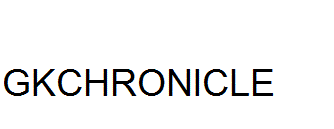Indian Geography / Physiography
Peninsular Plateau of India
The peninsular plateau of India is the oldest landmass in India that is a part of the Gondwana land. It is located towards the south of the
Great Northern Plains and is the largest physiographic division of India.
The topographical features of peninsular plateau include rift valleys, plateaus, block mountains, river basins, etc.
Divisions of Peninsular Plateau
- The peninsular plateau of India is divided into North-Eastern Plateau, Central Highlands and Deccan Plateau.
- The northern portion of the peninsular region of India is inclined towards North and hence many rivers like Son, Chambal, Betwa, etc. drain the North Indian
plains.
The southern portion of the peninsular region of India is inclined towards East and hence most of the rivers like Godavari, Krishna, Cauvery, etc.
except Narmada and Tapti flow into Bay of Bengal.
- Aravalli ranges are the North-Western boundaries of the peninsular plateau whereas Western Ghats or Sahyadri ranges are its Western boundaries and
Eastern Ghats are its Eastern boundaries.
- The North-Eastern Plateau consists of Shillong plateau and Karbi Anglong plateau. The Shillong plateau is further divided into 3 parts,
namely Garo hills, Khasi hills and Jaintia hills.
- The Central Highlands consists of Aravalli ranges, Malwa Plateau, Chota Nagpur Plateau, Rajmahal Hills and Vindhya ranges.
- The Deccan Plateau of India consists of Satpura ranges, Eastern Ghats, Western Ghats and many other smaller plateaus. Most of the Deccan
plateau is located in southern India and lies in between the Western Ghats and the Eastern Ghats.
Western Ghats
- Western Ghats are continuous in nature and they stretch from river Tapti to Kanyakumari and are parallel to the Western coast.
- They have intermittent Passes like Thalghat Pass between Nashik and Mumbai, Bhorghat Pass between Mumbai and Pune, Shencottah Pass
between Kollam and Madurai and Palghat Pass between Coimbatore and Palakkad.
- They are narrower than Eastern Ghats and their average width is 50-80 km. Their altitudes are high when compared to Eastern Ghats and are canonical in
shape. The height of Western Ghats raises from North to South.
- They are the source for many rivers like Godavari, Krishna, etc.
- Western Ghats lie perpendicular to the South West monsoons. By blocking the south-west monsoon winds, they cause heavy rainfall in
the west coast plains and sparse rainfall in the Deccan Plateau region.
Eastern Ghats
- Eastern Ghats are somewhat discontinuous in nature and appear continuous only between Mahanadi delta and Godavari delta. They are divided into several
parts. Beyond Vijayawada they are known by different names.
- Eastern Ghats run parallel to the Eastern coast and they stretch from Odisha to the Nilgiri hills.
- They are wider than the Western Ghats and their average width varies from 100-200 km.
- There are no major rivers that originate from Eastern Ghats and they lie almost parallel to the North East Monsoon in India
and hence do not cause much rainfall.
Some Facts about Peninsular Plateau of India
- Highest peak in Aravallis is Guru Shikhar peak.
- Amarkantak is the highest peak in Maikal range and is the source for river Narmada.
- Dhupgarh is the highest peak in the Satpura Range.
- Sadbhavna Peak remains the highest peak of Vindhya Range. Sadbhavna Peak is also called Goodwill Peak or Kalumar Peak or Kalumbe Peak.
- Anaimudi or Anamudi is the highest peak in the Western Ghats as well as in the entire peninsular plateau of India.
- Jindhagada Peak is the highest peak of Eastern Ghats.
- Eastern Ghats and Western Ghats merge at Nilgiri Hills. Doddabetta is the highest peak of Nilgiri Hills.
- Mahabaleswar is the source point of river Krishna.
- Trimbak is the source point of river Godavari.
Quiz
- Match the Mountain Peaks with their Mountain Ranges:
- Guru Shikhar Peak
- Dhupgarh Peak
- Sadbhavna Peak
- Jindhagada Peak
- Vindhya Range
- Eastern Ghats
- Satpura Range
- Aravalli Range
- a-4, b-2, c-1, d-3
- a-2, b-1, c-4, d-3
- a-4, b-3, c-1, d-2
- a-3, b-4, c-2, d-1
Answer
Ans: C
- Match the Passes with the Connecting Cities:
- Bhorghat Pass
- Thalghat Pass
- Shencottah Pass
- Palghat Pass
- Coimbatore and Palakkad
- Kollam and Madurai
- Mumbai and Pune
- Nashik and Mumbai
- a-4, b-2, c-1, d-3
- a-2, b-1, c-4, d-3
- a-4, b-3, c-1, d-2
- a-3, b-4, c-2, d-1
Answer
Ans: D
- Garo, Khasi and Jaintia hills are located in which of the following states?
- Assam
- Meghalaya
- Arunachal Pradesh
- Manipur
Answer
Ans: B
- The Eastern Ghats and the Western Ghats meet at which of the following hills?
- Cardamom Hills
- Anamalai Hills
- Nilgiri Hills
- Javadi Hills
Answer
Ans: C



